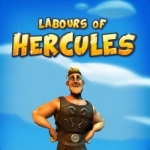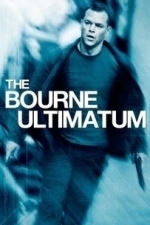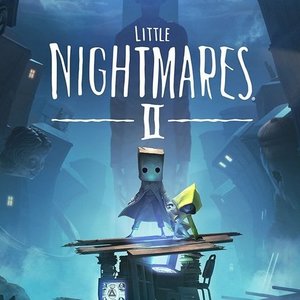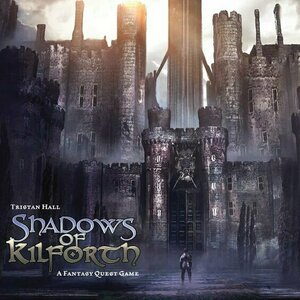Gareth von Kallenbach (980 KP) rated The Bourne Ultimatum (2007) in Movies
Aug 14, 2019
With most of his memory still missing, Boune travels to London to seek out the reporter, in an effort to learn what he knows, hoping it will lead him to the answers he seeks. Things take a turn for the worse when Bourne is discovered, by the powers that created him who are convinced that he is a danger to the program, and may expose everything he knows to the media. Unwilling to take that chance, Bourne is targeted for elimination which sets into motion a frantic series of events that spans seven cities around the world.
Tasked with locating Bourne is Pamela Landy (Joan Allen), who while dedicated to her task, is convinced that Bourne is simply caught up in the mix, and wants nothing more than to get on with his life.
Bourne in the course of tracking the source of the leak eventually meets up with Nicky Parsons (Julia Stiles), who not only gets Bourne up to speed, but helps him attempt to locate her boss, as he may very well be the source of the information leak and the key to unlocking Bourne’s missing memories.
Between daring action scenes, intrigue, and solid Drama, Bourne begins to unravel the puzzle as he attempts to solve the mystery and stay alive from the myriad of threats that target his every move.
This Bourne is solid and fits very well into the framework of the past two films. Damon has never been stronger his signature role and is able to convincingly transition from action sequences to the dramatic elements the story requires adroitly while never losing his connection with the audience. Bourne while dangerous is in many ways a victim, who simply wants to know the truth, and is easy for the audience to support.
There are numerous action and chase sequences that combine brutality and fluidity in a amazing combination. This is not a CGI fest, this is flesh and bone, metal and glass combining to create one of the best action dramas ever to grace the screen.
The film is well paced and never overstays its welcome thanks to a plot that is intelligent yet not overly complicated.
In a summer of sequels that have mainly not lived up to expectations, Bourne is a film that delivers.

Kid Chameleon Classic
Games and Stickers
App
Enter Kid Chameleon and experience SEGA's colossal platformer! Unleash your super powers in...

Colossatron: Massive World Threat
Games
App
AN EXPLOSIVE NEW GAME FROM THE CREATORS OF FRUIT NINJA AND JETPACK JOYRIDE! Colossatron: Massive...

Sonic Dash
Games
App
How fast can the world’s fastest hedgehog run? Play as Sonic the Hedgehog as you dash, jump and...

Mission: Impossible - Rogue Nation
Games and Entertainment
App
Your mission, should you choose to accept it… Infiltrate secure locations and eliminate...

Twelve Labours of Hercules
Education
App
Are you in becoming Hercules, the son of Zeus, the invincible legendary hero? Learn mythology while...
Chris Sawin (602 KP) rated the PlayStation 4 version of Little Nightmares II in Video Games
Apr 9, 2021
Little Nightmares II has you playing as Mono, a young boy that wears a paper bag over his head; not unlike Ugly Bob from the Terrance & Phillip In Not Without My Anus on the first episode of the second season of South Park. The game is a lot like Limbo with more color. Mono is thrown into a world of bleak surroundings and even darker outcomes. Thankfully, you have Six from the previous game to assist you. However, Little Nightmares II is only one player which seems like a missed opportunity for this to be a two player game.
The format of each level is pretty similar other than the last one. You typically flee a major boss character that chases you while you search for the key to a locked door. Stealth is involved throughout the game. If you make too much noise, run too fast, or walk into the light from the shadows in view of a boss’s eyesight then you get eaten or killed. You use your surroundings to thwart the boss, which usually involves killing them yourself. The chase element is the same near the end of the game, but you're thrown into more surreal and dreamlike surroundings.
It does seem like you interact more with the background in comparison to the previous game. You can almost always run into the background on any level. It may result in you falling off a cliff, but that kind of exploration ability in a side-scroller is really cool. I played Little Nightmares II on a PS5 despite the game being for PS4. What’s cool is you can feel Mono’s heartbeat through the controller when situations are tense and seeing little dust particles float through the air as you explore is a nice addition.
The highlight of the game is the story. The world Little Nightmares and Little Nightmares II takes place in is so deliciously dreary with what feels like no hope for survival. You root for Mono and Six to stay together as friends, but that outcome seems less and less likely as the game progresses. You also gain powers as Mono later on; the most noteworthy one being able to use televisions as portals. All of the major bosses are fantastically terrifying, as well. You’re chased by a hunter with a shotgun, a teacher with a stretchy neck and an appetite, twitchy mannequins that only move in darkness, viewers obsessed with television, and The Thin Man who kidnaps Six.
The game can be frustrating at times. Not only is it difficult and will result in you dying over and over again, but certain puzzles are almost impossible to solve without looking up how to solve them first.
According to the internet, it seems as though this may be the end of the Little Nightmares franchise since the creators are moving on to something new and will focus less on sequels in the future. It’s unfortunate since Dave Mervik’s writing with the story of the game is so well done and the game as a whole is mostly very fun and entertaining to play while providing legitimate thrills and chills. Tobias Lilja’s musical score is a frightening delight. However, despite Little Nightmare II’s flaws, it’ll be impossible not to be invested in anything Tarsier Studios is involved with in the years to come.
Purple Phoenix Games (2266 KP) rated Shadows of Kilforth: A Fantasy Quest Game in Tabletop Games
Sep 3, 2020
Shadows of Kilforth is subtitled, “A Fantasy Quest Game.” Right there in the title you find out exactly what you are up against in the very foreboding but unassumingly-sized box. A game set in a fantasy world that is focused on questing. I have to admit up front that this review will be treated a little differently as the rulebook is hefty and nobody wants to read a thorough rules essay on Shadows. So I will give you a very high-level overview of the main steps and then give you my thoughts on how it all works together.
DISCLAIMER: We were provided a copy of this game for the purposes of this review. This is a retail copy of the game, so what you see in these photos is exactly what would be received in your box. I do not intend to cover every single rule included in the rulebook, but will describe the overall game flow and major rule set so that our readers may get a sense of how the game plays. For more in depth rules, you may purchase a copy online or from your FLGS. -T
Shadows of Kilforth is essentially a card and dice RPG-esque adventure game with an Asian-style theme but set in a fantasy world where locations will be devastated into gloom (building upon the first in the series Gloom of Kilforth). The players, as the heroes, have the daunting task of journeying throughout Kilforth’s 25 locations to collect items, allies, spells, and titles to overcome main quests and subquests before every location falls into gloom. These quests usually have the players gathering specific card types to satisfy and complete. Once main player storyline quests, called Sagas, are completed the hero levels up and when they complete their fourth quest in their main Saga they may attempt their Finale and then may finally assault the big boss, the Ancient.
Each turn players have Action Points (AP) to spend on doing different actions: movement, discovering rumours (yes, I know it’s the Queen’s English), confrontations, and regaling a Saga chapter, among several others. Some actions are free actions, called Deeds. These include resolving loot tokens, assaulting an ancient, exchanging items between players, and several others. By using combinations of Actions and Deeds players will be able to travel around collecting those items, allies, and so forth needed to complete their Saga chapters.
To complete objectives and quests, players will typically be rolling dice to meet requirements on the cards. This, as all role-players know, can be either supremely lucky or incredibly and predictably debilitating. Skill checks are abundant in Shadows and diversifying characters may or may not have advantages by being able to complete Fight, Study, Sneak, and Influence tests. Players will win if they can complete their Sagas and defeat the Ancient before all of the locations fall into gloom, signaling the end of the game.
All this, again, is very high-level and there are many intricacies in Shadows that I just cannot go over for the sake of time and the health of my typing fingers. But, the game can be played solo, cooperatively, or competitively. So depending on the mode of play and number of players Shadows can range from a 45 minute foray to multi-hour epics. This is why I have played this solo with one character for my plays.
Components. Shadows of Kilforth is very card-heavy, but also includes other goodies. The cards themselves are firstly quite numerous, but also good quality. I can see myself sleeving this and loving every minute of that process. Aside from the cards, the game includes standees for player pieces on the card map, wooden components to track HP, AP, Fate, Obstacles, Gold, Hidden characters, great swirly 6d6, and also cardboard chits for Loot tokens. I haven’t even mentioned the art yet and that may be the most stunning component in this game! I LOVE a game with great art, and Shadows has simply amazing art. This is not usually my style of game art either, but it is so pleasing and everything makes sense and gets me immersed in the game. Everything provided is wonderful quality and an absolute joy to use during play.
Ok so like always, we place our ratings graphic right at the top of our posts so our readers can see right away what we think of the game. As you can tell, I love Shadows of Kilforth. It has essences of so many games I enjoy pieced together in a very attractive and captivating package. The movement and subsequent destruction of map-cards are reminiscent of Forbidden Island/Desert and Tiny Epic Defenders, which I really love (don’t hate – it’s a good game). The gathering of select card types and returning to a location to complete feels like fetch quests in MMORPGs (Final Fantasy XI being my main squeeze for many years). Obviously dice skill checks and level ups from tabletop RPGs are in there as well.
Shadows is just such a great collection of mechanics that I love that I can see myself playing this game over and over and over. Caveat: I will never play this any way other than absolutely solo. My first play, yes a learning session, was just shy of two hours from setup to tear-down. Adding players will increase game length, and playing with AP-prone friends is a no-go for me on Shadows; I had to reference both the excellent provided cheat sheet and the rulebook throughout the play but I eventually got the hang of it and was able to fly through. I may play this solo but with multiple characters cooperatively someday, but I do not wish to play this with other people. Ever.
So here’s my final thought. Shadow of Kilforth is a beefy game, but is well worth the time and effort to learn and play a couple times before passing judgment. It has everything I love in a game and I can’t stop thinking about it. I want to play all the different Race/Class combinations and just dunk on all the Ancients. If only my dice didn’t hate me so much. I will certainly be keeping this one forever, and if you are a fan of fantasy themed adventure card games with heavy use of dice and cool components, DEFINITELY take a look at Shadows of Kilforth. As I am the only one who has played this, I speak for the team in saying Purple Phoenix Games gives this one a 6 / 6. Treat yoself to this one, folks.

Add-Ons Studio for Minecraft
Games and Entertainment
App
The makers of the official Minecraft Skin Studio app bring you: Add-On's Studio for Minecraft! Are...

Space Harrier II ™ Classic
Games, Entertainment and Stickers
App
The classic on-rails ground-breaking shooter, Space Harrier II is now available on mobile! Play free...


